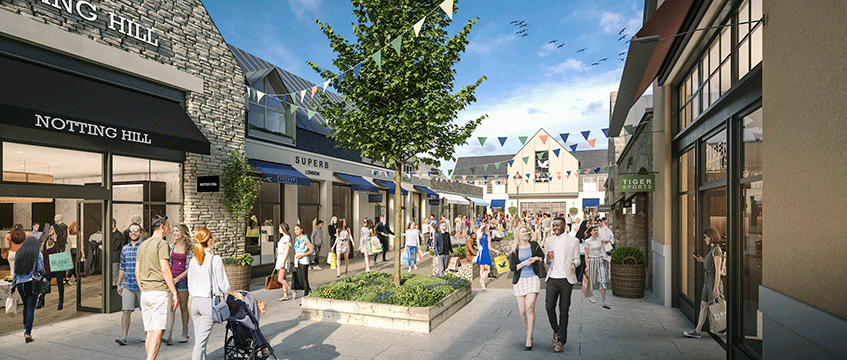As over 5,000 attendees from more than 75 countries prepare to descend on Cannes for the annual Mapic retail property trade show, industry figures hope the real estate sector continues to demonstrate its resilience, transformation and adaptability as retail is reshaped.
From structural shifts in the retail sector to the role of experiential spaces in reviving high streets and shopping centres, several key themes are emerging as central to the event’s discourse.
“While macro-economic conditions will continue to shape the occupier landscape, many brands and retailers are taking a longer-term strategic view when it comes to prime high streets,” said Larry Brennan, head of European retail agency at Savills. “Consequently, demand for the highest-quality spaces in the best locations will remain strong, particularly in Southern Europe and major markets like London and Paris. Germany, as well, is poised to emerge as a hotspot for activity in 2025; as markets adjust and with vacancy rates expected to tighten.”
Tom Woolven, lead asset manager at Schroders Capital, said that, at its broadest level, the sector “is now offering value and opportunities for both retailers and investors”.
“The retail warehouse market has remained resilient due to low occupational costs attracting convenience, value and food-led retailers who have all proven to be successful during economic challenges such as the pandemic and the cost-of-living crisis,” he added. “The demand from these occupiers has helped maintain rental growth for investors. Meanwhile, there has been a huge polarisation in the shopping centre sector between good schemes, fit for modern retailing, and the rest.”
Leisure, however, “is in seriously choppy waters”, Woolven said. “Leisure assets have had to get a lot cheaper, with the sector currently characterised by high-risk covenants and high costs associated with capital contributions to fund fit-outs and landlord’s works. The future of cinemas has also impacted this subsector, but despite this, the investment market is characterised by very limited stock and double-digit yields, even for historically prime schemes.”
Increased confidence
For Tim Wilks, director at bowling group Lane7, the revival of retail lies in its ability to embrace hybrid formats, where physical stores become brand-building hubs complemented by online platforms. “Experiences”, he asserts, are becoming essential to attracting footfall.
“Certain towns and cities have already hit the bottom and are now back on the upwards climb, while others are yet to pull out of decline,” Wilks said. “A lot of this is about being able to offer a good mix of different types of retail and the building stock being suitable for modern retail and leisure requirements. I believe that leisure and ‘experiences’ as integral components of visits to shopping centres or high streets are becoming increasingly widely accepted across the UK and other parts of Europe.”
In this “different format” for retail, Wilks added, space requirements will change as some high-street premises become “showrooms” and other occupiers look to “wow consumers” with scale. That will call for real estate to adapt, he said.
“You need the right type of buildings, properly structured deals and landlords accepting that leases may be shorter and offer less security of tenure,” Wilks said. “There are definite green shoots across the wider marketplace and more people can now see the general shape of what the future looks like compared with the pre- and post-Covid periods.”
Vivienne King, founder of Impactful Places and Revo board member, agreed.
“Many retail spaces that remain are expected to adapt to being less and less about transactions and more about variety and experience,” she said. “This is already evident as we see more leisure brands move into former department store spaces, while traditional retailers are creating more flagship stores which look to appeal to a wide variety of shoppers and include new concepts as well as exclusive products.”
Beth McDonald, managing director at Derby’s Derbion shopping centre, said retailer confidence in physical spaces is being shown through significant investment in refits and expansions.
She said: “We are continuing to see confidence among retailers in their bricks-and-mortar spaces, and this has been evidenced by the fact that over £35m has been invested across Derbion by new brands and existing retailers on refits and upsizes since 2021, including £5.2m so far in 2024.
“This increased confidence by retailers in physical retail is coinciding with a wave of new innovative occupiers who are taking spaces across UK retail destinations. At Derbion we have welcomed several growing brands, and we are also speaking to new exciting new operators, outside the traditional retail space, who are keen for a city centre presence.”
Gaining traction
The outlet retail sector also offers an optimistic narrative. Experts believe in the sector’s ability to attract experience-driven and value-conscious customers by offering premium brands at affordable prices.
Matt Slade, retail director at Quintain, said: “Outlet retail has remained remarkably resilient to online penetration. Through our own specific data analysis at Wembley Park and London Designer Outlet we are seeing this style of shopping gaining traction among younger shoppers, particularly with sports, lifestyle and footwear brands.
“These more youthful outlet shoppers are driving demand for athleisure and also footwear, which is very much in their sweet spot and a category that grew 8% last year despite the cost-of-living crisis.”
Simon Tothill, property and development director at Robert Hitchins, said: “The outlet sector is one of the more consistent outliers in real-world retail. Today, outlets play a critical role as part of a brand’s omnichannel strategy, offering a premium shopping experience with the promise of quality at an affordable price point.
“Brands seek out outlet spaces that will complement their online presence while also providing engaging, destination-style environments. This has the power to serve both price-conscious and experience-driven shoppers. As consumer confidence grows, these outlets are proving that physical retail will thrive alongside e-commerce, attracting both retailers and customers back to real-world shopping experiences.”
Send feedback to Shifali Gorka
Follow Estates Gazette











